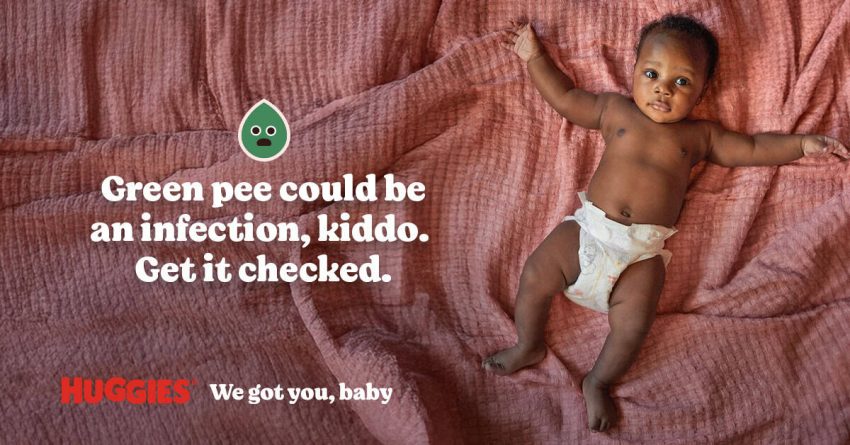Changing a nappy quickly becomes second nature to new parents. Sure, it’s messy, but there is more to learn about this daily procedure than most realise.
By taking a moment to examine the nappy’s contents, parents can better gauge their baby’s well-being and use daily nappy changes as a tool to identify any potential health concerns.
Dehydration, diarrhoea, bleeding and in more severe cases, infections and liver issues are some of the health issues parents can spot in their little one’s leftovers. Karen Moodley, senior brand manager at Huggies urges parents to learn how to recognise the signs.
If you’re wondering about the potential seriousness of the situation, research finds that diarrhoeal dehydration is responsible for approximately 20% of deaths in children under five. A lot of that could have been prevented with early intervention.
“Your baby can’t always tell you what’s wrong, but their nappy can in many instances,” says Moodley. “Their bodies act as an early warning system if parents know what to look for.”
Let’s get number one out of the way first
Parents may not realise it, but urine is bursting with information about a baby’s health and each dampened nappy change is a quick opportunity to do a little diagnosis.
Here’s what it might be trying to tell you:
Yellow: All good, the baby is well hydrated. Nothing to worry about.
Orange: Mild dehydration. Offer more fluids and things should come right.
Brown: Severe dehydration. Your baby needs medical attention.
Red: Possible blood. Take your baby to the doctor immediately.
Green: This could indicate a urinary tract infection. Get it checked out by a medical professional soonest.
“Any of these health concerns can lead to severe distress for your little one,” says Moodley. “If it smells a bit funny, if they cry when they wee or if the colour is off – don’t be afraid to get comfortable with knowing what is healthy and what is not.”
Pushing on to number two
While the ick factor may shoot up when the subject of analysing a dirty nappy comes up, Moodley says it’s important to know when poop gets serious. “It may be a messy moment, but the colour in your baby’s nappy can say a lot.”
Here’s what the nappy might be trying to tell parents:
Black & sticky (meconium): Normal in the first few days after a baby is born. (if still black after a week, it could signal internal bleeding, so check in with your paediatrician)
Yellow & soft: A great sign if the baby is breastfed. Tan or brown and firmer if the baby is formula-fed, which is also healthy.
Red: This may be blood from a tear or an allergy and requires medical attention right away.
Green: Often harmless, but frothy or persistent green might mean imbalanced feeding (too much foremilk, not enough hindmilk). A lactation consultant can help decipher whether the situation requires medical attention.
White or grey / dark pee: This could indicate possible liver or gallbladder complications and will need urgent medical attention.
Dealing with dehydration
Too many watery poos / stools can lead to dehydration in a child. Registered nurse and midwife Lynn Bluff suggests making a simple oral hydration solution (ORS) at home using boiled water, salt, and sugar, which helps replace lost fluids and minerals, and can even save a child’s life in a severe situation.
If your child has more than three watery stools a day, start administering this ORS and keep offering sips between feeds until they feel better.
“If your little one is vomiting too, offer frequent and small quantities,” advises Bluff. “Remember even if they vomit again – they don’t vomit all the stomach contents, so some will stay down – just keep persevering. Every mouthful can make an enormous difference.”
Huggies introduces Project Red
As a brand committed to wellness from day one, Moodley says Huggies recently launched Project Red, a public awareness campaign to help parents recognise critical health signs in their baby’s nappies.
“The goal of this project is simple,” explains Moodley, “to equip caregivers with the knowledge to spot early warning signs and act fast. While babies can’t tell parents what’s wrong, their nappies often can.”
If you want to learn more about what your baby’s nappy is trying to tell you, visit the Project Red website for more details.
Huggies Project Red Disclaimer:
*The information provided by Huggies is for informational purposes only and not a substitute for medical advice. Always consult your paediatrician or healthcare provider for concerns about your baby’s health. If your baby is ill or you suspect an emergency, seek medical attention right away.
Content supplied by our select Partners and paid for content ad advertisement.
